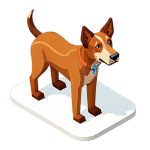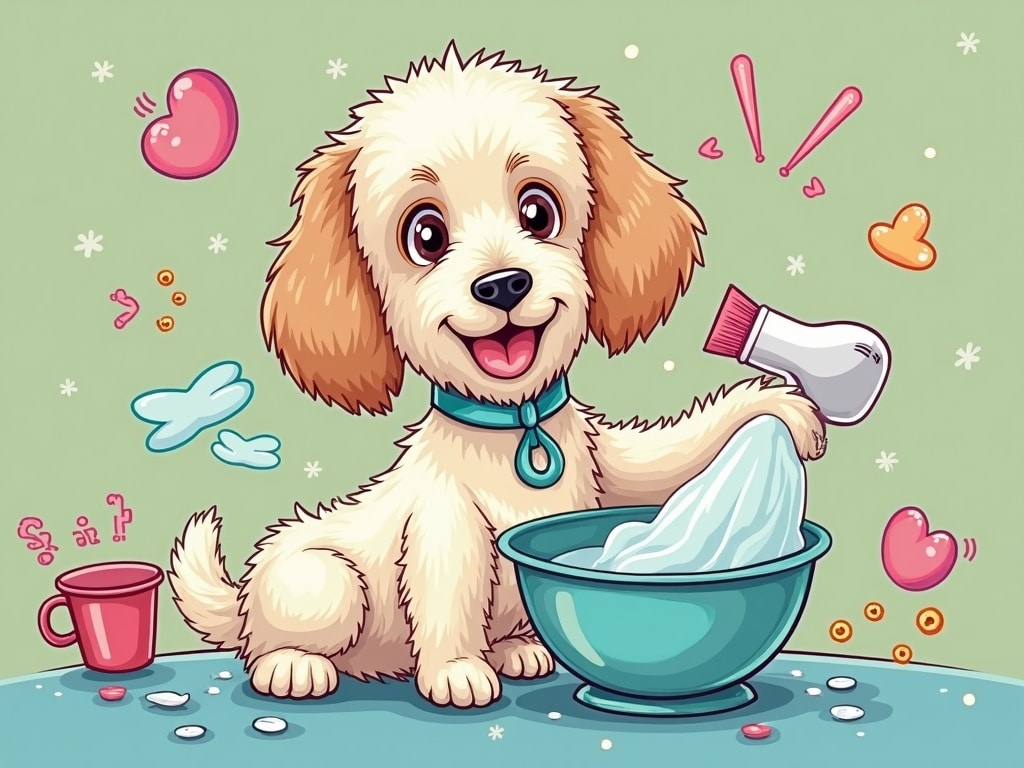The Ultimate Dog Grooming Hacks Guide: Save Time, Money, and Your Sanity!
Is your dog's fur resembling a tumbleweed more than a silky, smooth coat? Does the thought of grooming turn your playful pup into a wriggling, stressed-out mess? Fear not, fellow dog lovers! This comprehensive guide is packed with dog grooming hacks to transform your furry friend from scruffy to stunning – all while saving you time, money, and a whole lot of sanity. Let's dive in!
Essential Dog Grooming Tools: Your Arsenal for a Beautiful Pup
Before you embark on your grooming adventure, arm yourself with the right tools. These are the must-haves:
- Brushes: Invest in a slicker brush, a bristle brush, and a deshedding tool tailored to your dog’s coat type.
- Nail Clippers: Guillotine or scissor-style, whichever you're most comfortable with. Don’t forget styptic powder!
- Shampoo: Choose a dog-specific shampoo that suits your dog's skin and coat needs.
- Towels: Absorbent microfiber towels will make drying a breeze.
- Grooming Table (optional): A stable surface can save your back and provide better control.
- Ear Cleaner: A gentle solution to keep those ears clean and healthy.
- Toothbrush & Toothpaste: Dog-specific, of course!
Having these tools on hand as part of your pet emergency preparedness will make sure that your dog gets the best care possible.
Creating a Zen Zone: A Stress-Free Grooming Environment
The key to successful grooming is creating a positive association. Here's how:
- Choose a Calm Space: Select a quiet area free from distractions.
- Positive Reinforcement: Reward your dog with treats and praise throughout the process.
- Start Slow: Introduce grooming tools gradually, allowing your dog to sniff and become familiar with them.
- Keep it Short: Begin with short grooming sessions and gradually increase the duration as your dog becomes more comfortable.
- End on a Positive Note: Always finish with a reward and plenty of affection.
Brush Like a Boss: Techniques for Different Coat Types
Not all coats are created equal! Here's the lowdown on brushing different types of fur:
- Short Coats: Use a rubber grooming mitt or bristle brush to remove loose hair.
- Long Coats: Employ a slicker brush to detangle and a bristle brush to smooth.
- Double Coats: Utilize a deshedding tool to remove the undercoat and prevent matting.
- Curly Coats: Opt for a slicker brush and a metal comb to work through tangles.
Regular brushing, ideally a few times a week, is crucial to prevent mats, reduce shedding, and keep your dog's coat healthy and shiny.
Bath Time Bliss (or Bust): Frequency and Shampoo Selection
Bathing frequency depends on your dog's lifestyle and coat type. Generally, once a month is sufficient. Use a dog-specific shampoo formulated for their skin type. For example:
- Sensitive Skin: Look for hypoallergenic or oatmeal-based shampoos.
- Dry Skin: Choose moisturizing shampoos with ingredients like aloe vera or shea butter.
- Itchy Skin: Consider medicated shampoos with ingredients like hydrocortisone or salicylic acid (consult your vet first).
Always rinse thoroughly to prevent skin irritation.
Nail Trimming Nirvana: Safe and Effective Techniques
Nail trimming can be daunting, but it's essential for your dog's comfort and mobility. Here's how to do it safely:
- Identify the Quick: The pink part of the nail contains blood vessels and nerves. Avoid cutting into it!
- Trim in Small Increments: Gradually clip the tips of the nails until you're close to the quick.
- Use Styptic Powder: In case you accidentally cut the quick, styptic powder will stop the bleeding.
- Positive Reinforcement: Reward your dog with treats and praise throughout the process.
If you're unsure, ask your vet or a professional groomer to demonstrate the proper technique.
Quick & Easy Grooming Hacks for Busy Owners
Short on time? These dog grooming hacks will help you maintain your dog's appearance between full grooming sessions:
- Waterless Shampoo: Use a spray-on waterless shampoo to freshen up your dog's coat.
- Grooming Wipes: Wipe down your dog's paws and face after walks to remove dirt and debris.
- Deodorizing Sprays: A quick spritz of dog-friendly deodorizing spray can eliminate odors.
- Focus on Problem Areas: Concentrate on brushing areas prone to matting, such as the armpits and behind the ears.
Taming the Terror: Dealing with a Dog That Hates Grooming
If your dog is resistant to grooming, patience and positive reinforcement are key.
- Desensitize Your Dog: Gradually introduce grooming tools and procedures, pairing them with positive experiences like treats and praise.
- Use a Licking Mat: Distract your dog with a licking mat smeared with peanut butter or yogurt during grooming sessions.
- Enlist Help: Ask a friend or family member to assist with holding your dog or offering distractions.
- Consult a Professional: A professional groomer may have experience working with difficult dogs and can offer valuable advice.
Mat-Busting Magic: Removing Tangles from Your Dog's Fur
Mats and tangles can be painful and uncomfortable for your dog. Here's how to remove them gently:
- Use a Detangling Spray: Apply a detangling spray to the affected area.
- Work in Small Sections: Gently separate the mat into smaller sections.
- Use a Mat Splitter or Comb: Carefully work the mat splitter or comb through the tangle, starting at the ends and working your way up to the roots.
- Be Patient: Removing mats can take time, so be patient and avoid pulling or tugging on your dog's fur.
For severe mats, it's best to consult a professional groomer.
When to Call in the Pros: Recognizing the Need for Professional Grooming
Sometimes, despite your best efforts, professional grooming is necessary. Consider professional help if:
"Unlock the Secrets to a Blissful, Healthier Puppy: Discover the Benefits of Holistic Housebreaking"
- Your dog has severe matting or tangles.
- You're uncomfortable trimming your dog's nails.
- Your dog requires a specialized haircut.
- You're unable to groom your dog due to physical limitations.
Haunted Hounds & Ghoulish Good Looks: Your Dog's Guide to Halloween Costume Domination is a great article if you are concerned about your dogs appearance.
Oral Hygiene Heroes: Keeping Your Dog's Teeth Clean and Healthy
Dental health is crucial for your dog's overall well-being. Brush your dog's teeth daily with dog-specific toothpaste and a toothbrush. You can also use dental chews and toys to help remove plaque and tartar.
Drying Dilemmas: The Best Ways to Dry Your Dog After a Bath
Proper drying is essential to prevent skin irritation and matting.
- Towel Drying: Use absorbent microfiber towels to remove excess water.
- Blow Drying (Low Heat): Use a dog-specific blow dryer on a low heat setting. Keep the dryer moving to avoid overheating.
- Air Drying: Allow your dog to air dry in a warm, draft-free environment.
Brush your dog's fur while drying to prevent matting.
Ear Cleaning Essentials: Keeping Those Ears Sparkly Clean
Regular ear cleaning helps prevent infections and keeps your dog's ears healthy. Use a dog-specific ear cleaning solution and cotton balls to gently clean the outer ear canal. Avoid inserting anything deep into the ear canal.
Beyond the Brush: Diet and Supplements for a Healthy Coat
A healthy diet plays a vital role in your dog's coat health. Feed your dog a high-quality dog food rich in essential fatty acids like omega-3 and omega-6. You can also supplement with fish oil or flaxseed oil to promote a shiny, healthy coat.
Troubleshooting Common Grooming Issues
Here's how to deal with some common grooming challenges:
- Fleas: Use a flea comb and flea-specific shampoo. Consult your vet for preventative treatments.
- Ticks: Remove ticks carefully with tweezers and apply an antiseptic to the bite area. Consult your vet for preventative treatments.
- Shedding: Regular brushing with a deshedding tool can help minimize shedding.
With these dog grooming hacks, you can keep your furry friend looking and feeling their best, saving yourself time, money, and a whole lot of frustration. Happy grooming!


